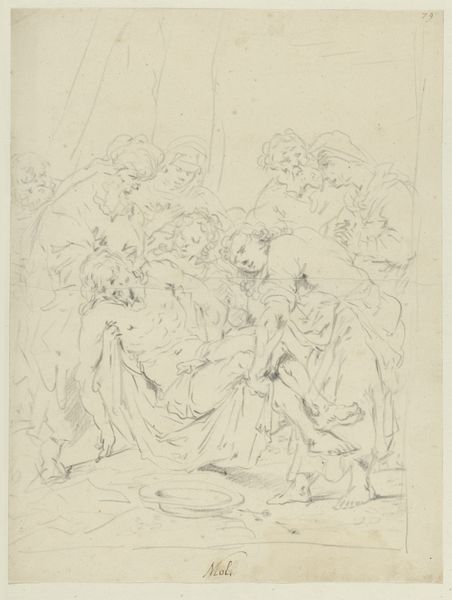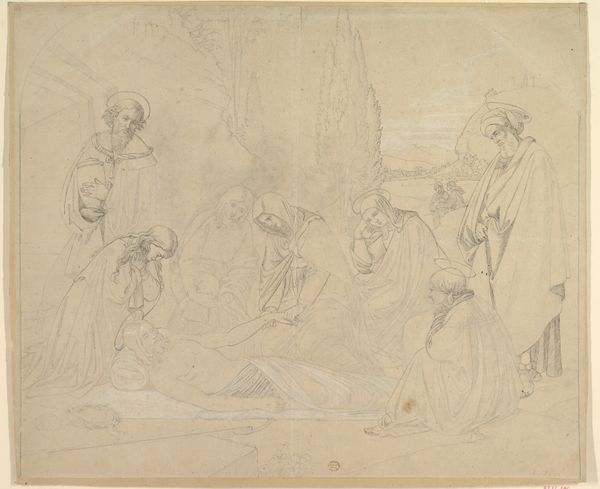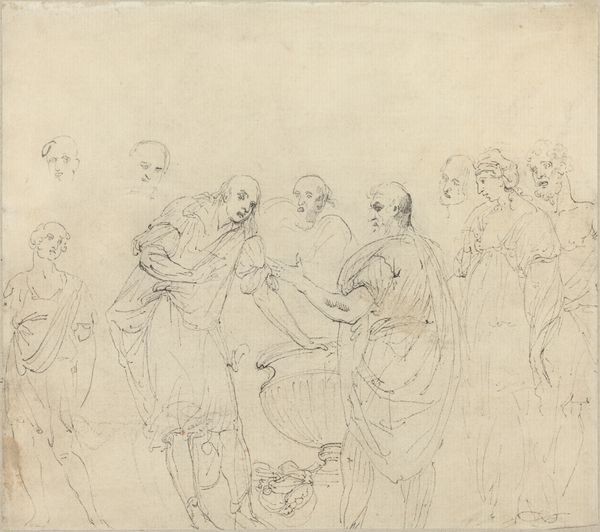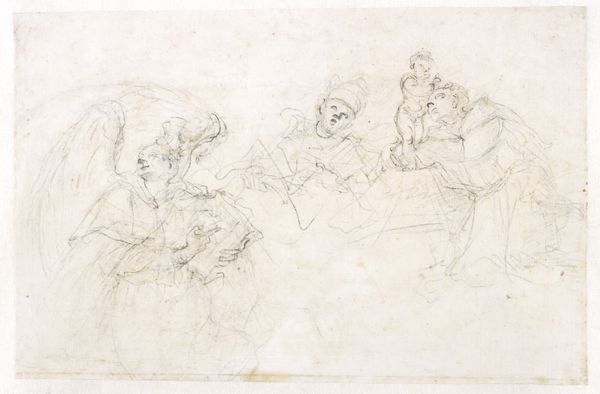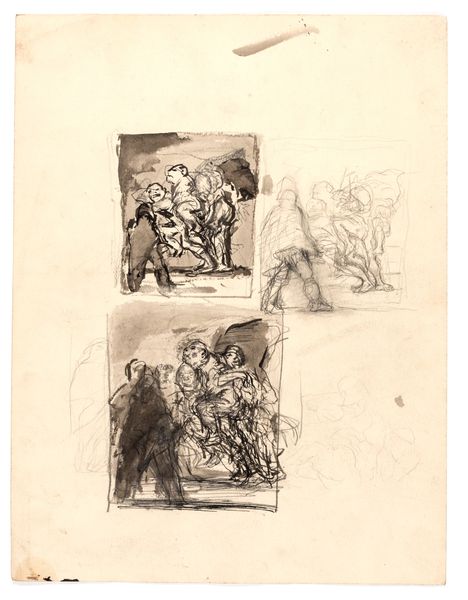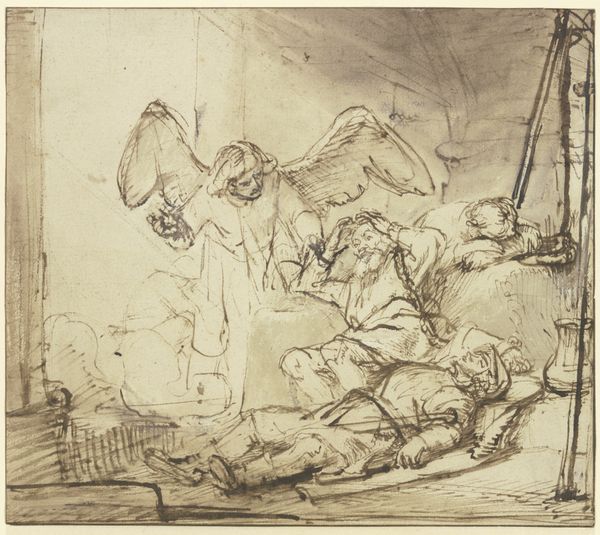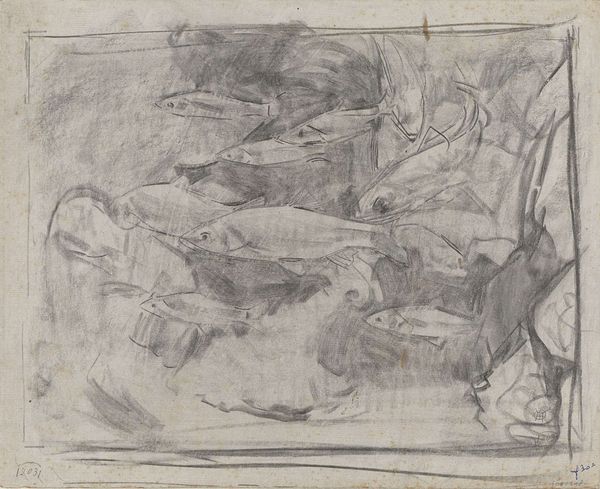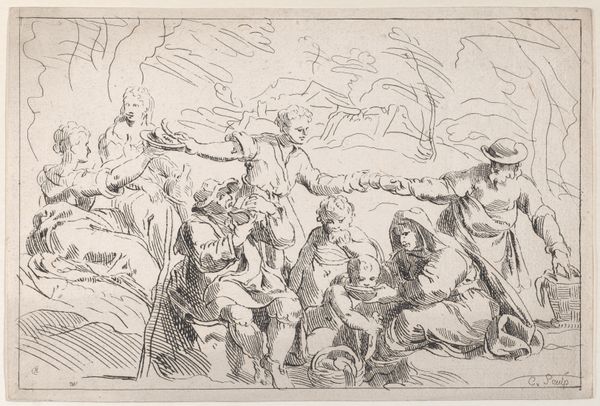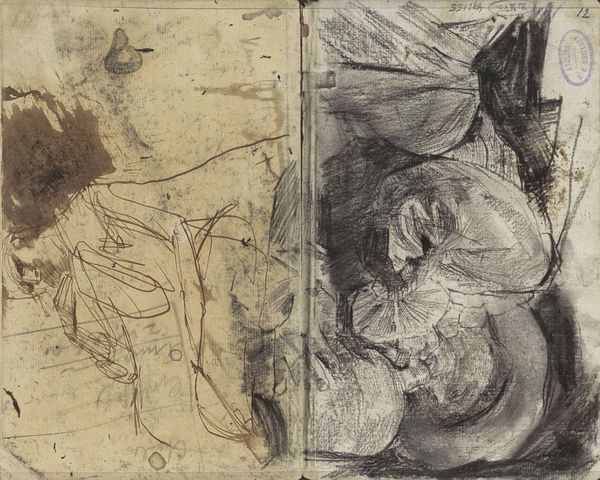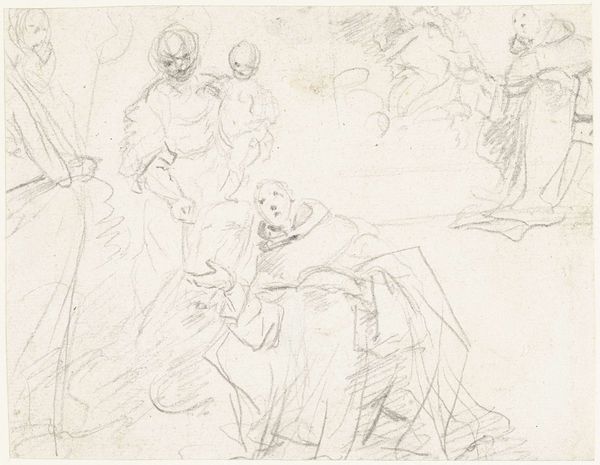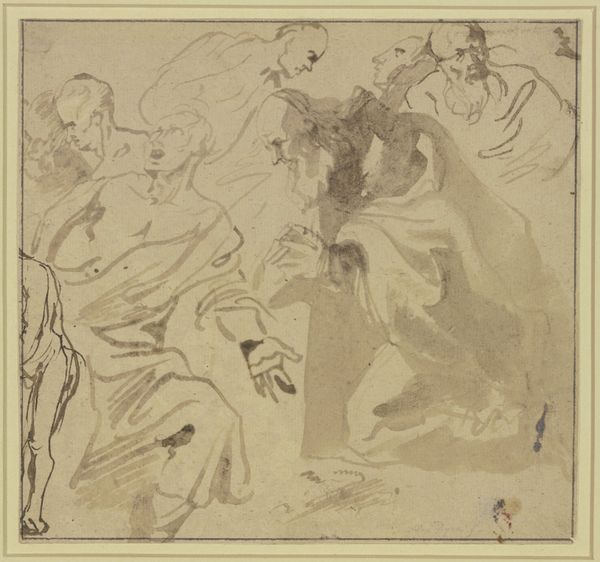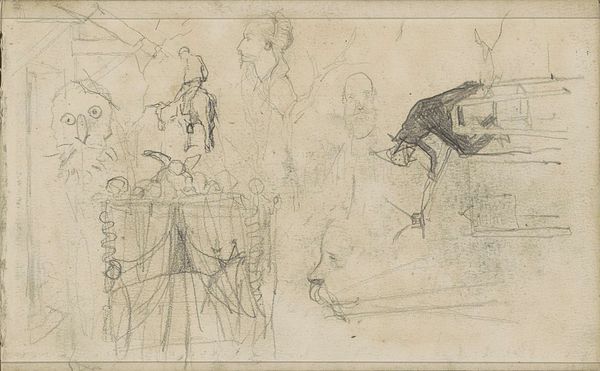
Triumph of Death: Three Skeletons Invading a Bacchanal Orchestrated by a Magician or an Evil Demon 1770 - 1771
0:00
0:00
Dimensions: 357 × 572 mm (both sides); 420 × 369 mm (secondary support)
Copyright: Public Domain
Editor: This ink drawing, "The Triumph of Death: Three Skeletons Invading a Bacchanal Orchestrated by a Magician or an Evil Demon," made between 1770 and 1771 by Henry Fuseli, presents quite a stark contrast with its seemingly joyful subject clashing with the intrusion of death. The scale feels vast, almost like a stage filled with dramatic tension. How do you interpret this work in relation to its time? Curator: Fuseli created this during a period of significant social and political upheaval. Considering the context, I see this work as a powerful allegory for the fragility of life and the pervasive presence of mortality. The bacchanal, a symbol of hedonistic pleasure and social abandon, is brutally interrupted by the skeletons, forcing us to confront the ephemerality of earthly delights. What power dynamics are at play here, would you say? Who are the empowered, and who are not? Editor: Well, at first glance, the skeletons seem to be the empowered figures, looming over everyone. But perhaps the magician, or the evil demon orchestrating the bacchanal, holds a different kind of power through manipulation. It is almost like the image comments on how power is relational and never static. Curator: Precisely. The "evil demon" suggests a critique of those in power who lead society into moral decay and self-destruction. Remember the rising voices against aristocracy in the late 18th century. Fuseli's image doesn't just depict death as an inevitable event; it presents it as a consequence of societal choices, echoing themes of social justice and the potential for revolution simmering at the time. Do you see any feminist readings here, as well? Editor: I do - The positioning of women seems particularly vulnerable amidst all this chaos and hints towards broader discussions on female vulnerability and oppression during this era. It seems like Fuseli wasn't merely illustrating a scene, but making a pointed statement about society, power, and morality. Curator: And hopefully, through this examination, we have unearthed some connections with our own era and modern experience. It makes you think, doesn't it? Editor: Absolutely. I’ll never look at a party the same way again!
Comments
No comments
Be the first to comment and join the conversation on the ultimate creative platform.

